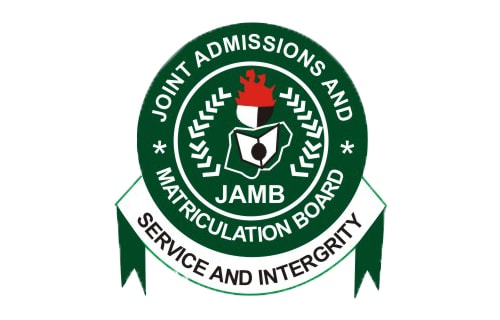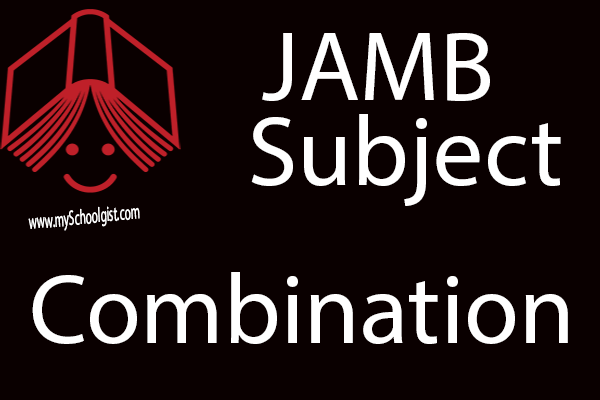
The current official Principles of Accounts JAMB Syllabus for UTME candidates is now available. The JAMB syllabus contains all the topics UTME candidates writing the JAMB CBT exam are expected to cover before the examination to ensure they are adequately prepared for the examination.
If you have been looking to get the JAMB Syllabus online, look no further. We understand that JAMB usually provide this syllabus for candidates in a CD. However, we have discovered that many candidates are unable to access to access this due to one reason or the other.
We have therefore decided to make it easier for you by making it available online so you can view it using any device that can access internet including your mobile phones.
Here we have provided you the detailed, complete and current JAMB Syllabus for Principles of Accounts. To view the JAMB Syllabus for all subjects, go to: Official JAMB Syllabus For All Subjects
Current JAMB Syllabus – Principles of Accounts
The aim of this 2016/2017 Unified Tertiary Matriculation Examination (UTME) syllabus in Principles of Accounts is to prepare the candidates for the Board’s examination. It is designed to test their achievement of the course objectives, which are to:
1. Stimulate and sustain their interest in Principles of Accounts;
2. Use the basic knowledge of and practical skills in Accounting;
3. Apply the knowledge and interpretation of accounting information to decision making;
4. Determine the relevance of accounting information to business and governments;
5. Use information and communication technology for present and future challenges.
6. Use current accounting principles in financial reporting.
Current JAMB Syllabus – Principles of Accounts: DETAILED SYLLABUS/CONTENTS
| TOPICS/CONTENTS/NOTES | OBJECTIVES |
1. Nature and Significance of Accountinga.Development of accounting (including branches of accounting) | Candidates should be able to: i. differentiate between bookkeeping and accounting; ii. use the historical background of bookkeeping and accounting for future development; iii. apply the right principles, concepts and conventions to solving accounting problems; iv. examine the role of accounting records and information in decision making. v. List the branches of Accounting such as Cost Accounting, Management Accounting, Auditing, Financial Accounting and Taxation. |
2. Principles of Double Entrya. Functions of source documents | Candidates should be able to: i. relate the various source documents to their uses; ii. relate source documents to the various books of original entry; iii. determine the effect of changes in elements of accounting equation; iv. identify the role of double entry and use it to post transactions into various divisions of the ledger; v. balance off ledger accounts; vi. extract a trial balance from balances and determine its uses; vii. identify various types of errors and their necessary corrections; viii. create a suspense account. |
3. Ethics in Accountinga. Objectives | Candidates should be able to: i. use ethics in preparing and presenting Accounting Reports; ii. list qualities of an Accountant such as honesty, integrity, transparency, accountability and fairness. |
4. Cashbooka. Columnar cashbooks | Candidates should be able to: i. determine the cash float; ii. differentiate between two and three columnar cashbooks and how transactions are recorded in them; iii. differentiate between trade and cash discounts; iv. examine the effects of trade and cash discounts in the books of accounts. v. Identify various petty cash expense; |
5. Bank Transactions and Reconciliation Statementsa. Instrument of bank transactions | Candidates should be able to : i. identify bank documents such as cheques, pay-in-slips, credit and debit cards and their uses; ii. assess the impact of automated credit system, credit transfers, interbank transfers and direct debit on cash balances; iii. list factors that cause discrepancies between balances of cashbook and bank statements iv. prepare adjusted cashbook balance v. prepare bank reconciliation statements. |
6. The Final Accounts of a Sole Tradera. Income statement (Trading and profit and loss account) | Candidates should be able to: i. determine the cost of sales, gross profit and net profit of a sole trader; ii. identify fixed assets, current assets, long- term liabilities, current liabilities and proprietor’s capital; iii. compute adjustable items on the related expenditure and income in the profit and loss account; iv. relate the adjustable items and their corresponding disclosure in the statement of financial position; v. differentiate between bad debts and provision for bad and doubtful debts. |
7. Stock Valuationa. Methods of cost determination using FIFO, LIFO and simple average | Candidates should be able to: i. determine the cost of materials issued to production or cost of goods sold using FIFO, LIFO and simple average; ii. calculate the closing stock of materials or finished goods using FIFO, LIFO and simple average; iii. compare the advantages and disadvantages of each method of stock valuation; iv. determine the effects of stock valuation on trading, profits and cost of goods sold. |
8. Control Accounts and Self-balancing Ledgersa. Importance of control accounts | Candidates should be able to: i. determine the importance of control accounts in a business enterprise; ii. differentiate between sales ledger control account and purchases ledger control account; iii. identify the individual elements of control accounts; iv. prepare the control accounts |
9. Incomplete Records and Single Entrya. Conversion of single entry to double entry | Candidates should be able to: i. determine proprietor’s capital using statement of affairs; ii. determine the amount of sales, purchases, cash balances, debtors, creditors and expenses by converting single entry to double entry; iii. use accounting equations and gross profit percentage to determine gross profit or cost of sales. |
10. Manufacturing Accountsa. Cost classification | Candidates should be able to: i. calculate prime cost, production overhead, production cost and total cost; ii. determine the basis of apportionment into production, administration, selling and distribution. |
11. Accounts of Not-For-Profit-Making Organizations.a. Objectives of Not-For-Profit-Making organizations | Candidates should be able to: i. distinguish between the features of Not-for-profit-making organizations; ii. determine the subscription income, subscription in arrears and in advance; iii. compute the cash balances and accumulated funds, surplus and deficit for the period from all sources. iv. Prepare: a. receipts and payments account b. income and expenditure account c. statement of financial position |
12. Departmental Accountsa. Objectives | Candidates should be able to: i. identify the reasons for departmental accounts; ii. determine the expenses associated with individual departments; iii. compute departmental profits or losses. |
13. Branch Accountsa. Objectives | Candidates should be able to: i. determine the reasons for branch accounts; ii. calculate profits and losses from branches; iii.determine the sources of differences and reconcile them. |
14. Joint Venture Accountsa. Objectives | Candidates should be able to: i. identify the objectives of Joint Venture; ii. determine the profit or loss of the Joint Venture; iii.determine the profit or loss of each venture. |
15. Partnership Accountsa. Formation of partnership | Candidates should be able to: i. determine the instruments of partnership formation; ii. categorize all accounts necessary for partnership; iii. determine the effects of admission and retirement of a partner; iv. prepare revaluation account v. identify the accounts required for dissolution and conversion to a company; vi. determine the partners share of profits or losses |
16. Introduction to Company Accountsa. Formation and classification of companies | Candidates should be able to: i. differentiate between types of companies; ii. identify the processes and procedures of recording the issue of shares and debentures; iii. compute elements of final accounts of companies; iv. Interprete the accounts for decision making using ratios such as current, acid test and stock turnover. |
17. Public Sector Accountinga. Comparison of cash and accrual basis of accounting | Candidates should be able to: i. differentiate between public sector accounting and private sector accounting; ii. identify the sources of government revenue; iii. differentiate between capital and recurrent expenditure; iii. calculate consolidated revenue fund and determine the values of assets and liabilities; iv. analyse the duties of the Accountant General, the Auditor General, the Minister of Finance and the Treasurer of local government; v. distinguish between the elements of control in government accounting procedures e.g. virement, warrant, votes, authority to incur expenditure, budget and due process certificate. |
18. Information Technology in Accountinga. Manual and computerized accounting processing system | Candidates should be able to: i. relate and differentiate between manual and computerized accounting processing system; ii. identify the processes involved in data processing; iii. relate the different components of computer; iv. identify the advantages and disadvantages of manual and computerized accounting processing system |
Current JAMB Syllabus – Principles of Accounts: RECOMMENDED TEXT BOOKS
Abdullahi D. Z. (2014) Modern Financial Accounting, Husab Global Press Concept Ltd.
Adeifa O. Ajileye, J. O and Oluwasanna, R. O (2001) Get your Financial Accounting Right. Book One:
Oyo, Tenlad Press International.
Ajileye, J. O. and Adetifa O. (2001); Get your Financial Accounting Right, Book Two: Lagos:
De Hadey Printing Services
Akinduko, A. O (2001) Basic Accounting: Akure: Spetins
Awoyemi, E. O. (1989) A guide to Government Accounting and Internal Audit, Ibadan: Onibonje Press
Dodge, R. (2002) Foundation of Business Accounting, (Second Edition), Bershire: Chapman and Hall
Ekwere, A. B. (1997) Contemporary Accounting, Abuja: Aflon Finance (Control and Management) Act 1959
Ekwue K. C. (2010) Principles of Accounts, Book 1 & 2, Adson Publishing Company, Onitsha
Femi L. (2013) Simplified and Amplified Financial Accounting
Frankwood and Alan S. (2002) Frankwood’s Business Accounting, Prentice Hall International Edition
Hassan M. M. (2001), Government Accounting, Lagos: Malthouse Press Limited
Igben, R. O. (2004) Financial Accounting Made Simple (Vol. I) Lagos: Roi Publishers
Longe, O. A. and Kazeem, R. A (2006) Essential Financial Accounting for Senior Secondary Schools:
Lagos: Tonad Publishers Limited
Millichamp, A. H. (1989) Foundation Accounting: An Introduction manual for Accounting Students,
London: DP Publications
Okwoli, A. A. (1995) Financial Accounting, Zaria: Tamaza Publishers
Oshisami, K. (1997) Government Accounting and Financial Control: Ibadan: Spectrum
Wisdomline Pass at Once JAMB.




